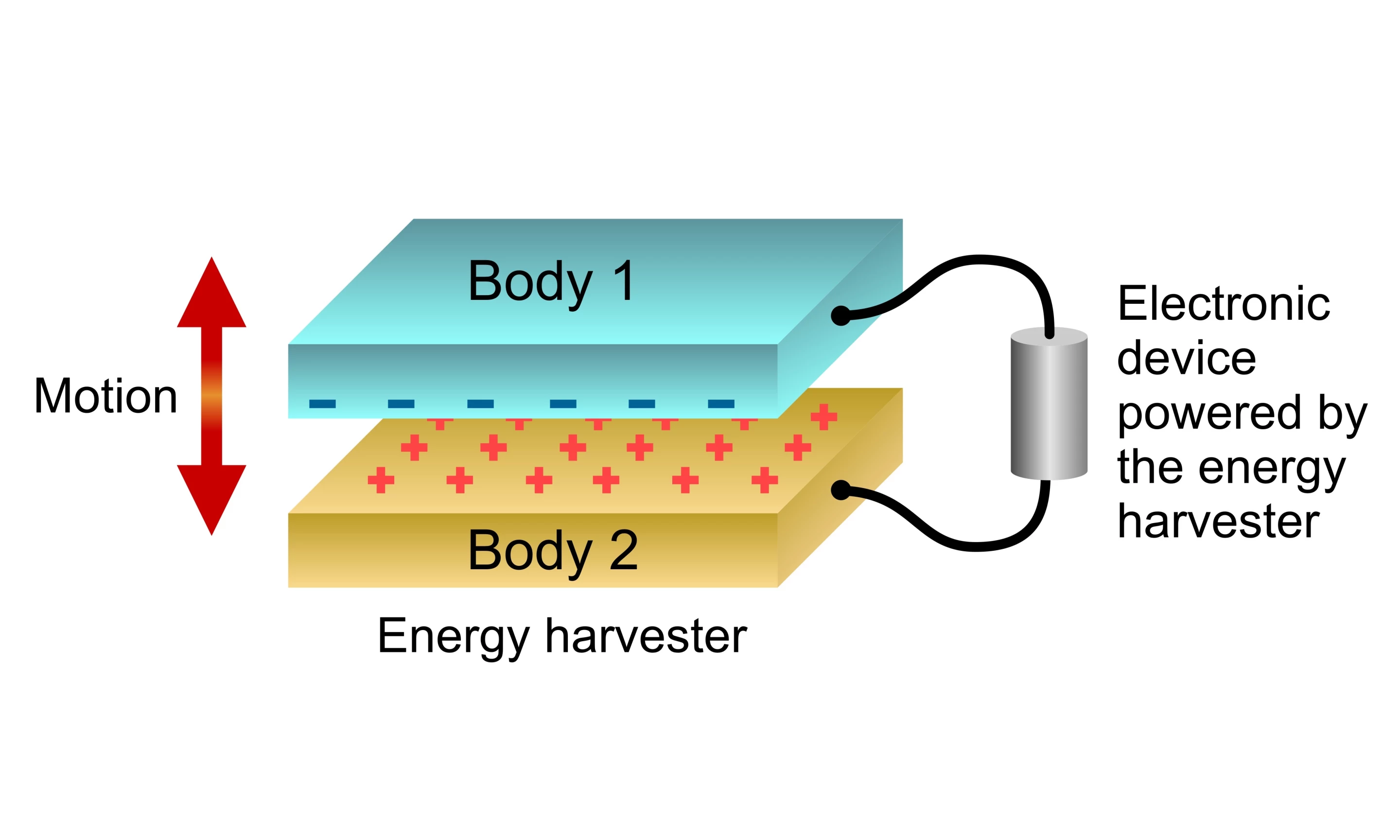Electrical energy is normally generated through heat, motion, nuclear transformation, or chemical reactions, but now scientists at VTT Technical Research Center of Finland have devised a new method that involves mechanical vibrations. They figured out how to "harvest" the vibrational energy that occurs naturally when two surfaces with different work functions are connected via electrodes, and this energy could potentially be used to power wearables and other low-power electronics.
A work function is a property of the surface of a material that is defined as the difference between the energy of an electron at rest and the minimum thermodynamic work (another form of energy) that is required to remove said electron from the material. It's often applied in photoelectric devices and cathode-ray tubes, and is sometimes guarded against in electronic circuits involving different metals, but it had not before been used in vibration energy harvesting.
The VTT scientists created a parallel-plate capacitor with copper and aluminum that was hooked up to an external circuit. The plates' respective work functions provided the initial one volt charge as electrons fled from one surface to the other. Different electrode materials could theoretically yield higher voltages – over 3 V with wide band-gap semiconductors or over 5 V with n and p-type diamond. The copper plate was fixed in place while a motor vibrated the aluminum plate perpendicular to both plates, either continuously or in pulses.
The researchers also ran simulations of their work function energy harvester in realistic microelectromechanical systems (MEMS) scenarios, determining that the built-in voltage could lead to output power over one order of magnitude higher when the vibration frequency is matched with the mechanical resonance frequency of the device.
Work function energy harvesters have one big advantage over the piezoelectric and electrostatic devices that generate electricity from mechanical vibrations to power many sensors and medical implants. The scientists note that such harvesters don't need an external power source or any electret materials (essentially, electrostatic magnets), and moreover they can generate more power in many operating conditions.
VTT estimates that it will take three to six years for this new technology to be rolled out on an industrial scale, though the researchers caution in their study conclusions that MEMS versions still need to be realized.
The research was published in the journal Scientific Reports.
Source:




